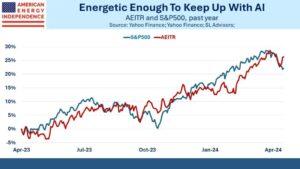The biggest biodiversity summit in history has delivered a new deal for nature. A number of Schroders experts were in Montreal for the event.
The headlines we have seen following COP15 synthesize the key conclusions of the summit – but sitting in darkened conference rooms and strolling around attendees’ stands, it felt different.
The outcome of COP15 should make financial regulators sit up and listen. The global deal for nature is a signal the financial community cannot ignore. But, to be honest, the agreed text is not the biggest or only thing to take away for me.
The full text is here. Catherine Macaulay, a sustainable investment analyst in our team who has been following developments from London, has summarised it here.
The “30 by 30” pledge is the central pillar to this agreement. It describes countries’ agreement to protecting 30% of land and water by 2030.
There have been comments from global leaders describing the agreement as a “Paris moment” for biodiversity, implying a new level of ambition. Certainly the negotiators have secured a strong agreement that should maintain momentum in this area. This has already seen a sharp increase in social and political focus in the last few years.
But my take is that the bigger message was in the event itself. Close to 25,000 people went to Montreal to discuss biodiversity and push for action. This might be fewer than attended the climate-focused COP27 in Sharm El-Sheikh this year, but is the best-attended biodiversity conference ever – and by a wide margin.
COP15 felt like two conferences in one building. One conference was among political delegates, debating wording in draft text.
The other was among civil society groups, individual countries and businesses discussing their goals and the progress they have made.
COP15: our top take aways
1. Change may be bottom-up rather than top-down
We have become attuned to the principle that “change starts from the top”, so that a global agreement informs regional and national policies, which drive corporate change and investor focus.
In recent climate conferences, the reverse picture – of greater ambition from civil society and the private sector than from global leaders – seems replicated in biodiversity. Business representation in Montreal was extensive and vocal in calling for clearer policy and increased transparency. The EU, for example, has gone much further than any global agreement with its regulation on deforestation-free supply chains.
More than 300 global businesses – including Schroders – with more than $1.5 trillion in combined revenues supported the Make it Mandatory campaign calling for biodiversity disclosures to be a requirement. More than 100 financial institutions – again, including Schroders – representing $19 trillion of assets have joined the Finance for Biodiversity pledge.
2. Clearer action on biodiversity will need more specificity
There was a lot of talk of “nature positive”, or “urgent action to tackle the biodiversity crisis”, which lacks the clarity of action that comes with “reduce carbon emissions”.
Nature and biodiversity is effectively an umbrella term for a wide range of natural assets and benefits, many of which are being depleted rapidly and each of which requires a specific action plan (for example eliminating commodity driven-deforestation, something we have committed to across our business).
In future the biodiversity discussion is going to need to focus on specific aspects of the challenge, while also bringing clearer measurement and quantification of the performances of different companies, countries or portfolios.
3. The value of global agreements is in the action that follows
With hindsight, the Paris Agreement marked a turning point because it prompted national governments to take action. It was not so much about the wording of the agreement itself, in the first instance. At the time of its signing, less than a handful of countries had committed to reaching net zero emissions. Since then, national action has snowballed, so that 85-90% of the world’s economic output is generated by countries that have made that commitment.
Whether this biodiversity agreement has the same impact will become clear in the next few years. However, the need for urgent action is better understood than was the case for climate action a decade or more ago, and a path to action has been mapped out by climate initiatives and policies which should help accelerate progress this time.
COP15: in a nutshell
Something with the most direct implications for our business is the Task Force for Nature-related Disclosures (TNFD). It was talked about everywhere and is widely seen as an obvious extension of the Taskforce on Climate-related Financial Disclosures, the climate equivalent which has worked its way into regulators’ plans around the world.
I have said many times that nature risk is an integral factor to investment risk and returns, and there is a clear opportunity in aligning financial flows towards nature positive goals.
It looks very likely that businesses, including our own, will need to plan for nature-related disclosures in the coming years. This is something we see as critical – and will prompt real change.
It also struck me in the discussions and panels I joined that the work we have done to assess climate-related risks and ongoing work to strengthen that analysis, the engagement we have done with companies on the topic and our natural capital investment, already put us in a good place to act on what comes next.
Natural capital plays a vital role in our economy and society. Every economy and industry is directly or indirectly dependent on nature and its services. No business can afford to ignore its value.
Our Plan for Nature, published in November, is a statement of intent in accelerating a nature positive future. Our focus is on delivering on it.
—
Originally Posted December 21, 2022 – COP15: a first-hand account and our top three take aways
Disclosure: Schroders
Important Information: This communication is marketing material. The views and opinions contained herein are those of the author(s) on this page, and may not necessarily represent views expressed or reflected in other Schroders communications, strategies or funds. This material is intended to be for information purposes only and is not intended as promotional material in any respect. The material is not intended as an offer or solicitation for the purchase or sale of any financial instrument. It is not intended to provide and should not be relied on for accounting, legal or tax advice, or investment recommendations. Reliance should not be placed on the views and information in this document when taking individual investment and/or strategic decisions. Past performance is not a reliable indicator of future results. The value of an investment can go down as well as up and is not guaranteed. All investments involve risks including the risk of possible loss of principal. Information herein is believed to be reliable but Schroders does not warrant its completeness or accuracy. Some information quoted was obtained from external sources we consider to be reliable. No responsibility can be accepted for errors of fact obtained from third parties, and this data may change with market conditions. This does not exclude any duty or liability that Schroders has to its customers under any regulatory system. Regions/ sectors shown for illustrative purposes only and should not be viewed as a recommendation to buy/sell. The opinions in this material include some forecasted views. We believe we are basing our expectations and beliefs on reasonable assumptions within the bounds of what we currently know. However, there is no guarantee than any forecasts or opinions will be realized. These views and opinions may change. Schroder Investment Management North America Inc. is a SEC registered adviser and indirect wholly owned subsidiary of Schroders plc providing asset management products and services to clients in the US and Canada. Interactive Brokers and Schroders are not affiliated entities. Further information about Schroders can be found at www.schroders.com/us. Schroder Investment Management North America Inc. 7 Bryant Park, New York, NY, 10018-3706, (212) 641-3800.
Disclosure: Interactive Brokers
Information posted on IBKR Campus that is provided by third-parties does NOT constitute a recommendation that you should contract for the services of that third party. Third-party participants who contribute to IBKR Campus are independent of Interactive Brokers and Interactive Brokers does not make any representations or warranties concerning the services offered, their past or future performance, or the accuracy of the information provided by the third party. Past performance is no guarantee of future results.
This material is from Schroders and is being posted with its permission. The views expressed in this material are solely those of the author and/or Schroders and Interactive Brokers is not endorsing or recommending any investment or trading discussed in the material. This material is not and should not be construed as an offer to buy or sell any security. It should not be construed as research or investment advice or a recommendation to buy, sell or hold any security or commodity. This material does not and is not intended to take into account the particular financial conditions, investment objectives or requirements of individual customers. Before acting on this material, you should consider whether it is suitable for your particular circumstances and, as necessary, seek professional advice.










![[Gamma] Scalping Please [Gamma] Scalping Please](https://ibkrcampus.com/wp-content/smush-webp/2024/04/tir-featured-8-700x394.jpg.webp)
![[Gamma] Scalping Please [Gamma] Scalping Please](https://ibkrcampus.com/wp-content/uploads/2024/04/tir-featured-8-700x394.jpg)












